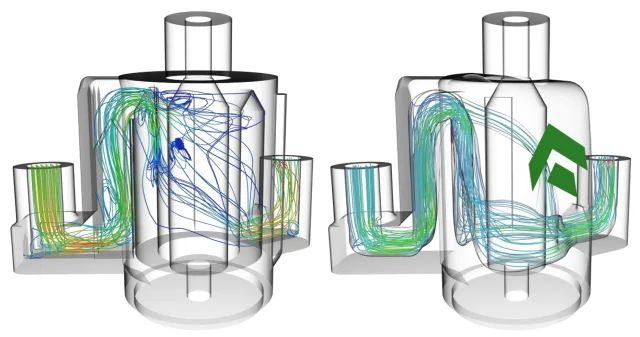
Thousands of Autodesk users, employees, and partners converged this week for the annual Autodesk University conference.
AU 2020 is being held not in the Nevada desert, as is typical, but in individual offices on individual screens all around the globe.
I’ve never sat so close to Autodesk CEO Andrew Anagnost as he delivered his opening remarks.
“We’ve been working hard to make this powerful technology more accessible,” was one line that caught my attention. Anagnost was speaking of a technology that his company has been proselytizing for years: generative design.
We’ve had limited success with Generative Design, using it to see if it could improve the Golden Gate Bridge. We wanted to dig deeper into Anagnost’s comments. What did he mean by accessible?

Like any emerging technology, we understand generative design has a way to go before entering the mainstream of design. We caught up to Autodesk’s Scott Reese, senior vice president of manufacturing, to see if the promised “accessibility” had made it any closer to becoming a real-world design tool. Reese provided a candid look at the current state of Generative Design—and his company’s ambitious vision for its future.
The interview below has been edited for clarity and brevity.
Engineering.com: How many of your users are actually using Generative Design?
Scott Reese: Generative is in its infancy. Not enough people are using Generative. Some of it has to do with muscle memory; “Hey, this is just how we’ve always worked.”
Some of it has to do with its accessibility. Generative Design is too hard to use. We’ve got work to do to bring it to the masses and turn Generative into a true collaborative partner as you’re designing. But we’ve done a ton of research as to how to make it more accessible and I’m excited to get that going. A lot of our early days on Generative were spent proving out algorithms and getting them right.
What are you doing to make Generative Design more accessible?
There’s a lot of picks and clicks and loads and things to set up, so we have to make it easier to use and more accessible, and we’re working on both of those things. It feels far too much like a simulation tool today. The designs that we’re working on moving forward don’t feel like a simulation tool. It really feels like a partner that helps you explore a lot more iterations than you would be able to otherwise. So it’s all about usability.
We’ll start out by accelerating the setup processes by making some assumptions based on the information that you’ve given us. And if you don’t like the results based on those assumptions, you can just go in and manipulate some of the assumptions, add more assumptions.
From an accessibility perspective, we’ve messed around with the business model a little bit. Right now in Fusion 360, users can explore all day long with Generative and they only pay when they download a result and want to take that design further [this costs 100 cloud credits, equivalent to $100 USD]. Through the end of the year we’ve removed the 25 cloud credit paywall for commercial users so that they can explore designs. That’s obviously driven usage up a bit, but until it becomes easier to use set up, I don’t think we’ll see mass market adoption.
But we learn from them every time, just like your article [on the Golden Gate Bridge]. We get good data every time people use it. Additionally, we build in new capabilities and we want to see people put those capabilities to the test. One of the things we’re starting to pilot with a few users right now is to bring in additional simulation solvers. For example, you’re going to start to see things like fluid solvers. It’s not just about mechanical, it’s about the overall system’s performance. The dynamic simulation around fluids and mechanical properties mixing is pretty complex. If we can get the computer to explore even yet another level of complexity on behalf of the user, we’re going to just get to a better and better result. Again, all of that is predicated on making it easier and easier to use.
Generative fluids was announced at AU. When will it be available to users?
In the next couple of months, you’ll start to see that rolling out.

I’ve been at Autodesk a little over 17 years now. I came in via acquisition and we’ve acquired so much intellectual property over those years. Where Generative gets super interesting for me, and where Fusion 360 gets super interesting, is that we’re converging all of that intellectual property in an end-to-end process on top of a cloud data background. And then because we have all of those capabilities, be it fluids, be it mold simulations, be it tools cutting, whatever it is, now we can automate all of that with Generative.
And that’s the thing that gets me so excited, being able to see where this stuff is going and seeing that Autodesk has the depth of intellectual property to continue building this thing out for years to come.
Read more at ENGINEERING.com
